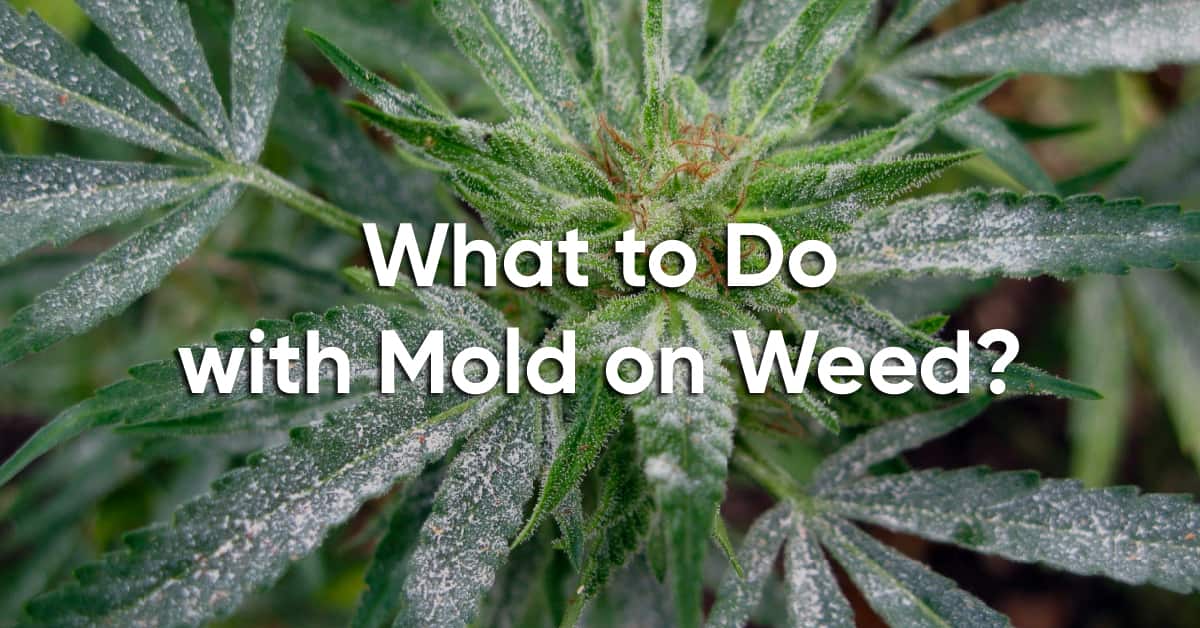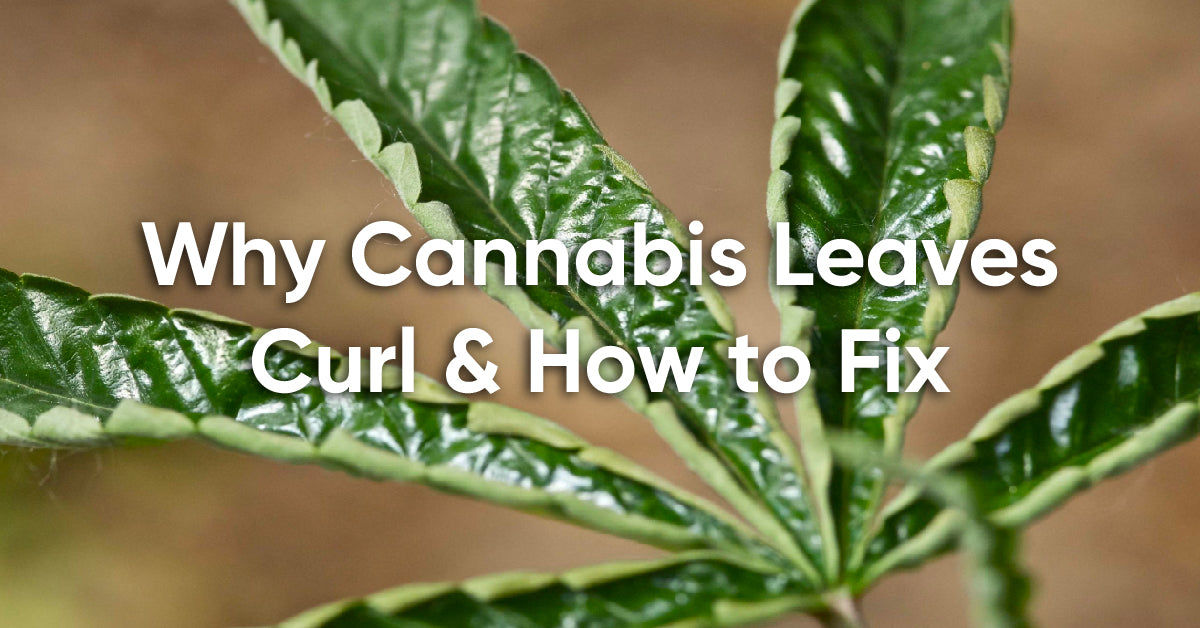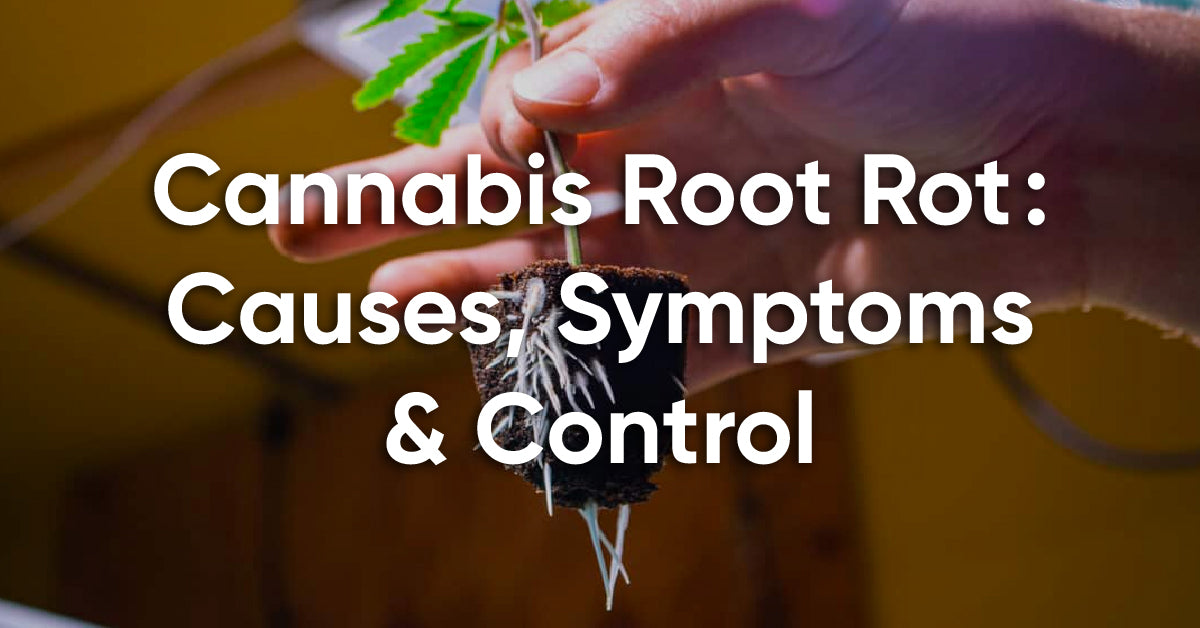What to Do About Common Cannabis Pests & Bugs?
Cannabis plants are beautiful sight to see…when healthy! Any plant, as a living organism, comes associated with risks, like pests and bugs!
Cannabis pests can reap havoc and completely ruin your crop. In this guide, we will cover the most common bugs on weed plants, how to identify them based on signs and symptoms, and why they have invaded into your grow area. In the end, let's find out the best methods for cannabis pest control.
Effective Methods for Cannabis Pest Prevention
I want to preface this piece by letting all growers know that the best way to prevent cannabis pests is to have a scheduled, cleaning and IPM regiment.
Integrated Pest Management (IPM)
IPM stands for "Integrated Pest Management," and should be implemented as part of the cannabis plant's regular care routine. This is hands down the best way to prevent any pests or bugs from taking hold and infesting your weed plants.
An IPM routine should should include the following key components:
- Regularly checking the area and plants for pests;
- Monitoring for any signs or symptoms that may indicate a pest infestation;
- Applying preventative sprays to your plants regularly, but never spray while the lights or fans are on.
- What's more, consider spraying the floors, trays, and walls of the grow area as well!
Minimize Stress on Plants
Additionally, try to avoid any extra stress put on the plants. When plants are stressed they often become weaker and less able to defend themselves. This not only makes the plant more vulnerable to pests, but will also hinder the plant ability to recover from pest damage.
Maintain Cleanliness
Pests will often make their way into the grow area through various means, including contaminated clothing, pets, and air intake. Even introducing previously infected plants into the grow area can lead to infestations. Hence, be sure to keep things clean with regular sweeping, mopping, and equipment wiping. It's not only crucial fro plant health, but helps to keep bugs on weed plants away!
That being said, there are some cannabis pests that are more common than others. Additionally, specific conditions and factors can increase the likelihood of pest infestations. Let’s get into it!
6 Common Cannabis Pests and Bugs
1. Fungus Gnats
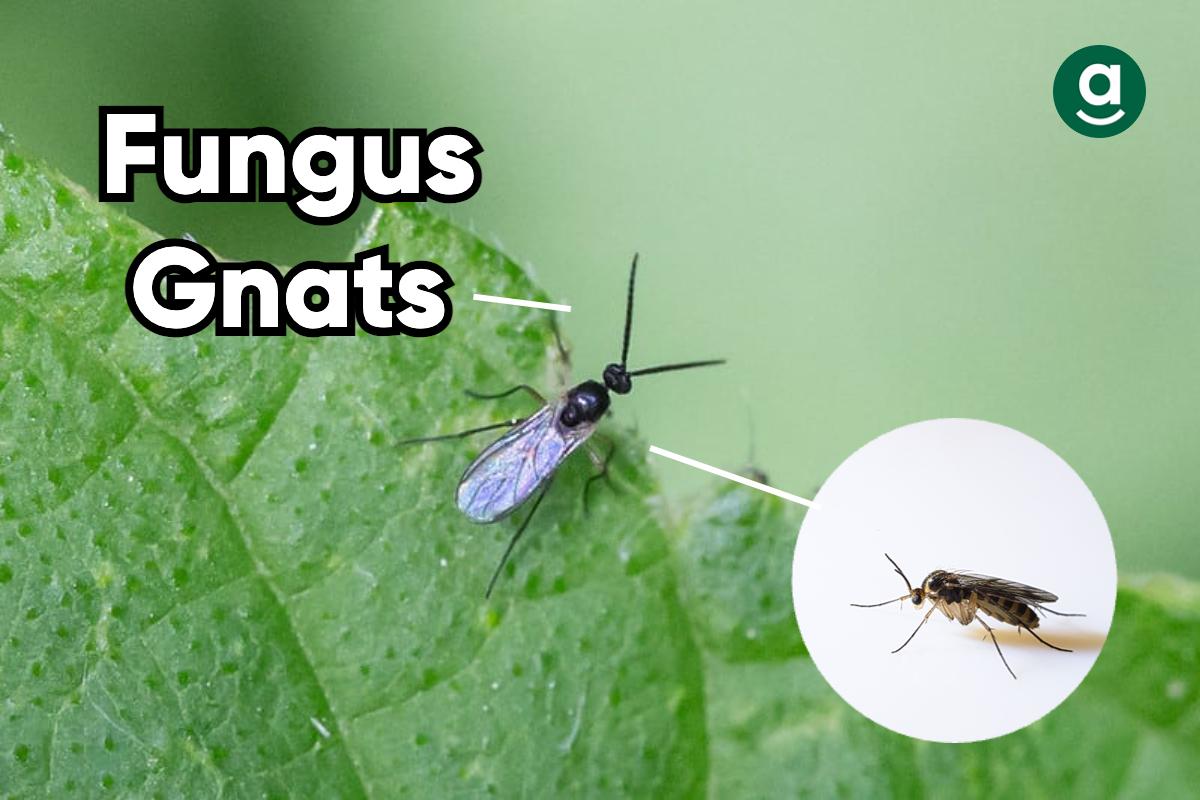
Fungus gnats are probably the most common amongst all the bugs found on weed plants. Fungus gnats are small flying insects that thrive in moist, damp, and warm conditions. They love humidity and low airflow! Therefore, they will often live and nest in or around the soil (or other growing medium), and lay their larvae in the moist soil.
Causes & Signs
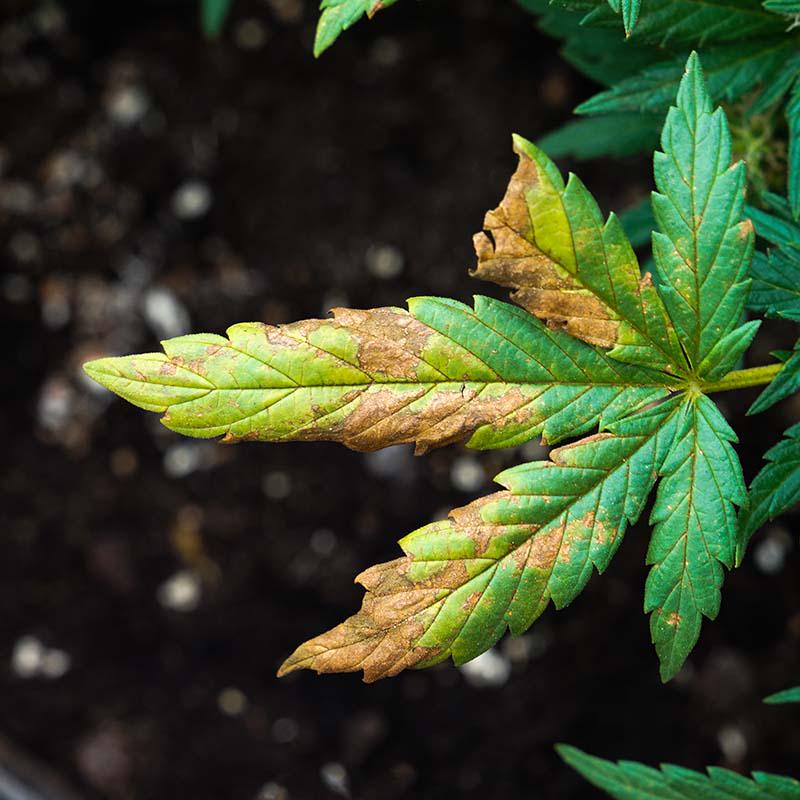
They will often appear when the grow medium stays too moist between waterings! Fungus gnat don't have a direct negative effect on the weed plant; but if left untreated, their larvae will feed on root hairs, potentially causing:
- Limitation of root function;
- Leaf yellowing;
- General wilting of the plant
How to Get Rid of Fungus Gnats
Good cannabis watering practice is the best way to get rid of fungus gnats; letting the top 1inch or soil or grow medium dry out before applying the next water is the best practice when trying to mitigate the gnats.
Another good practice is hanging yellow sticky traps around the pots, and just under the canopy. This will help cut the number of gnats down and prevent them from laying eggs in the grow medium. You can also mist some type of organic insecticides on the top layer of soil to help kill the gnats and larvae. Some soil growers will even sprinkle a thin layer of diatomaceous earth on top of the soil; this is a fine white powder that is harmless to humans, but will acts like a barrier of razor blades and and will prevent he gnats from laying eggs and reproducing!
2. Spider Mites
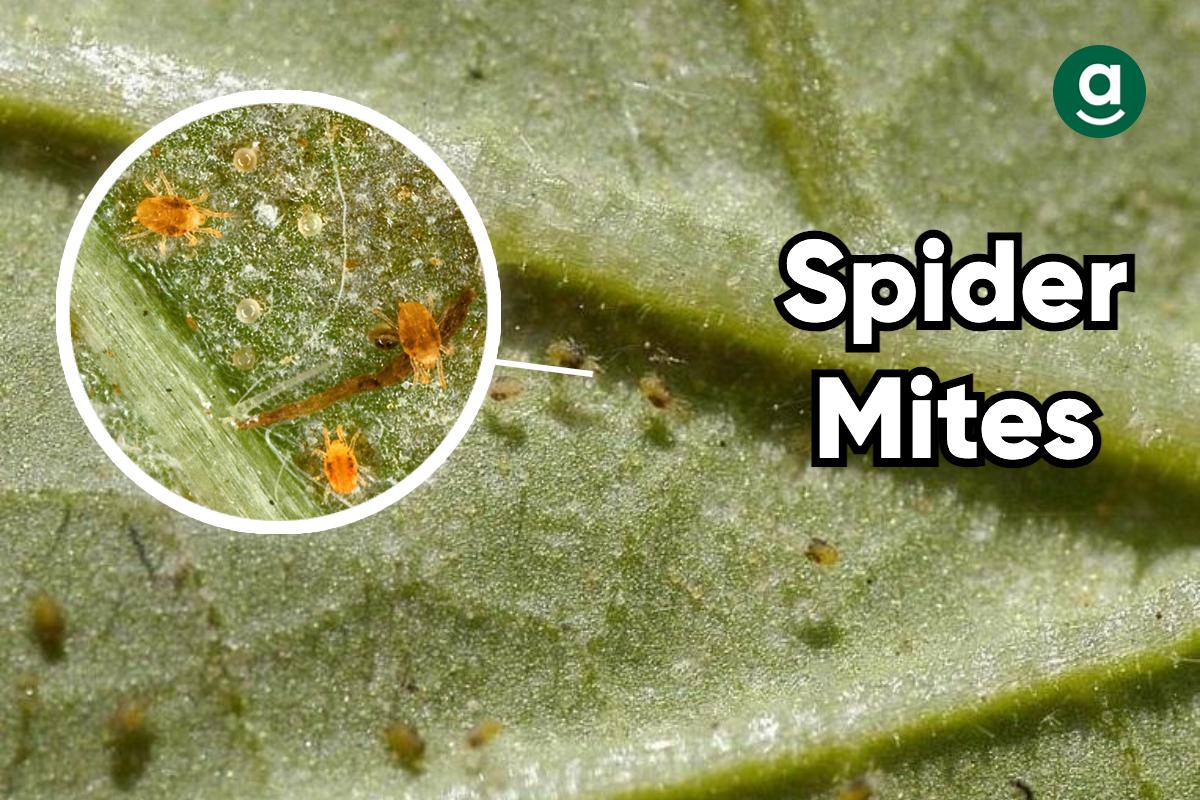
Spider mites is the next most common cannabis pests. Spider mites are actually not insects, they are small (almost microscopic) spiders or arachnids that typically live on the underside of the plants leaves. They often have a brownish, orange, red, or green color, and can be hard to spot with the naked eye.
Using a jeweler’s loop or magnification device can be very useful in spotting and identifying spider mites.
Causes & Signs
They love warm and dry conditions, and feed on the softest tissue of your cannabis plants. They are most commonly found on places where they can easily feed, such as the undersides of leaves, and on the tops of flower sites where they can hide and find protection.
Since they feed on the plant tissue, you will often see very small yellow spotting or speckling on the top side of the leaves they feed on. As the spider mites numbers increase, the spotting will become more prevalent and easier to see.
In general, these bugs on weed plants can lead to several leaf-related issues:
- Leaf curling up;
- spotting;
- continuously yellowing;
- drooping;
- necrosis and death;
- web production: the mites might produce webs between leaf blades, and in the cracks and crevices of buds and flower sites.
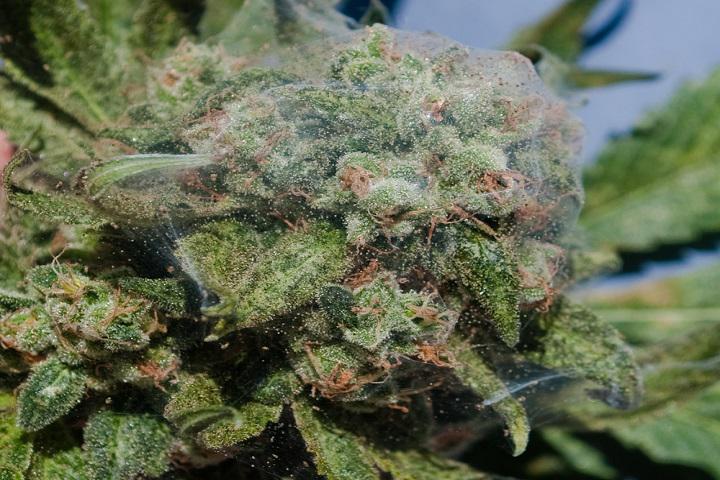
spider mite producing webs in the cannabis bud
It is not a pretty site when you walk into your grow space and see the tops of your plants covered in spider mite webs.
How to Get Rid of Spider Mites
A spider mite infestation can be very hard to mitigate once it has reached the point of webbing, and will greatly reduce yield, and quality of your crop. So, make sure you take preventive measures ahead of time and stay on top of your IPM regimen!
If you notice that your plant does have mites, there are a few things you can do to kill them off and greatly reduce their numbers. Organic insecticides or miteicides, such as neem oil and citric acid mixed with a few drops of dish soap, are great options. Mites can quickly adapt to chemical insecticides, so act quickly and opt for organic solutions!
Moreover, maintaining control over environmental conditions, such as temperature and humidity, can be instrumental in preventing an infestation of these types of bugs on your cannabis plants.
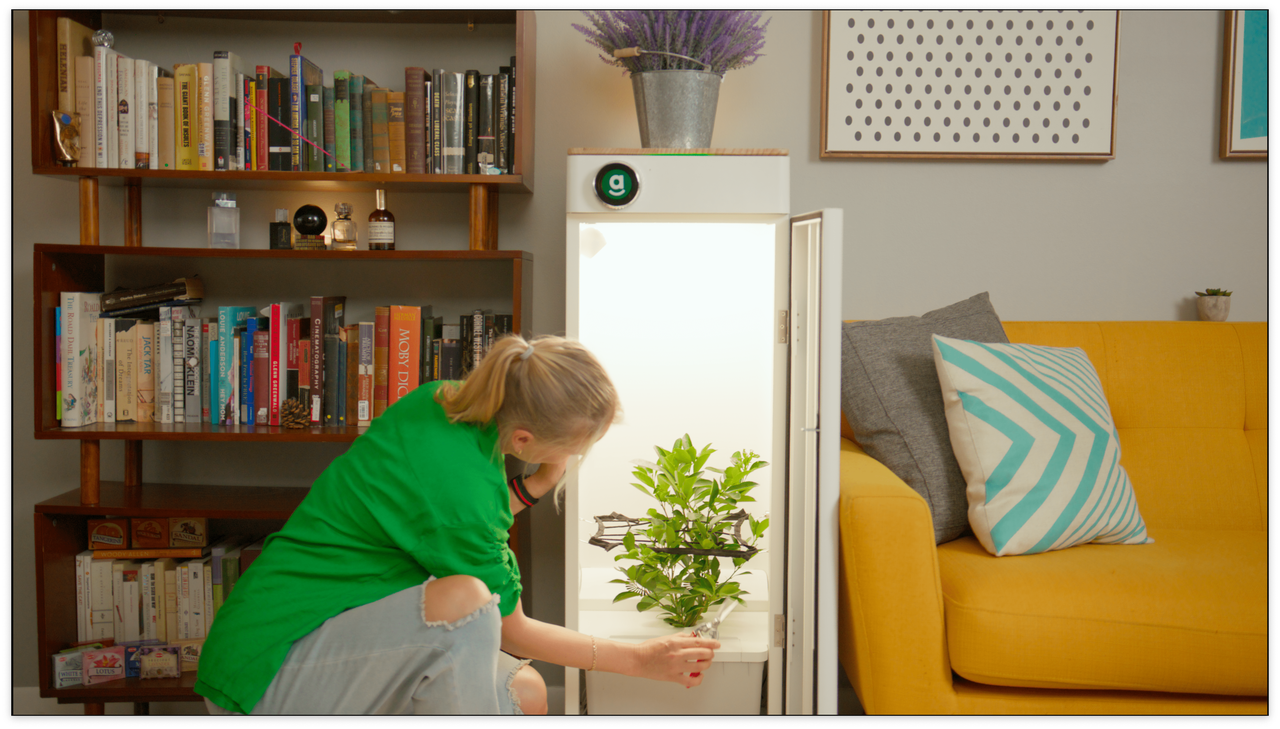

Hey abby offers a highly customizable smart growing systems, including grow boxes and grow tents, that allows you to finely adjust these parameters using our smartphone APP. Additionally, our compatible USB fan provides an extra level of control. If you're a beginner looking for an easy, pest-free solution, Hey abby's indoor grow cabinets have got you covered.
3. Thrips
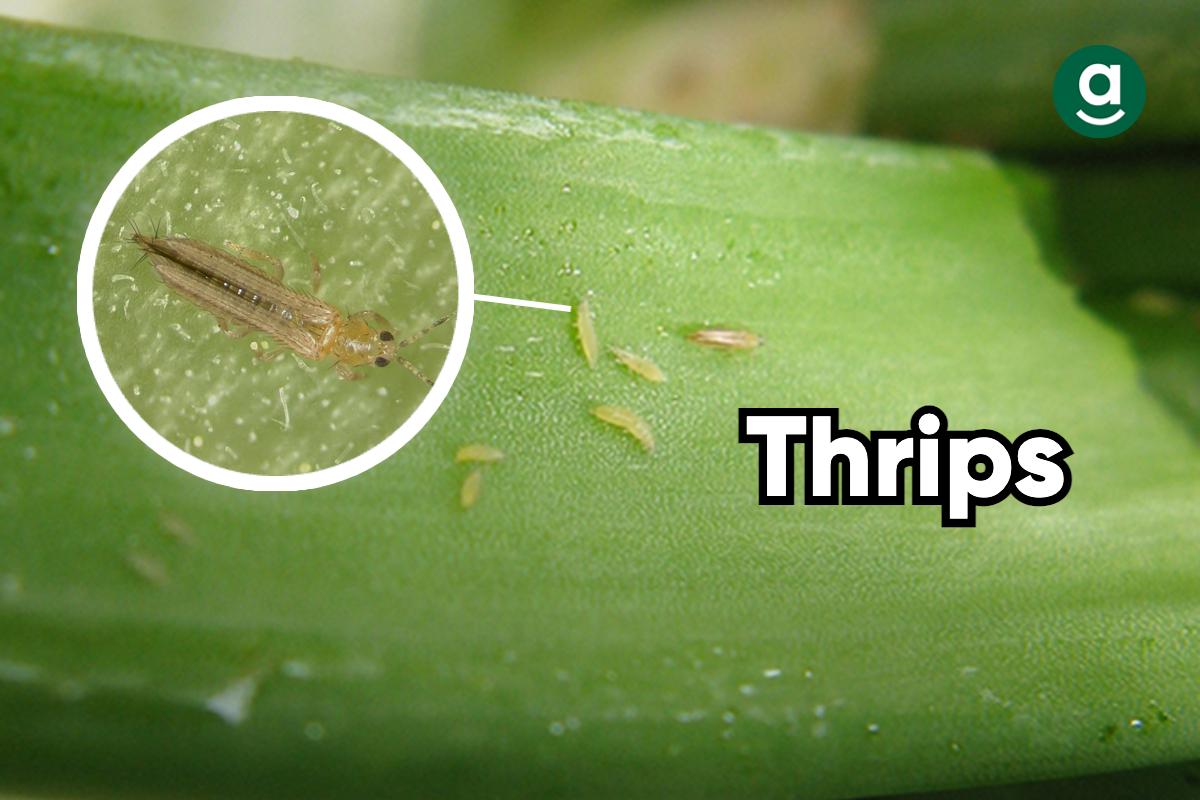
Similar to spider mites, thrips are another type of cannabis pest that lives and feeds on the plant.
Causes & Signs
These bugs on weed also enjoy warmer environments, and will reproduce quickly when the conditions are right.
Thrips are also very small and difficult to identify. They have long thin bodies that can resemble a grain of rice, and they move incredibly fast! Sometimes you will not even be able to notice or see the thrips, but may notice some odd dark spots on the leaves or stems of the plant; these are traces of thrip feces!
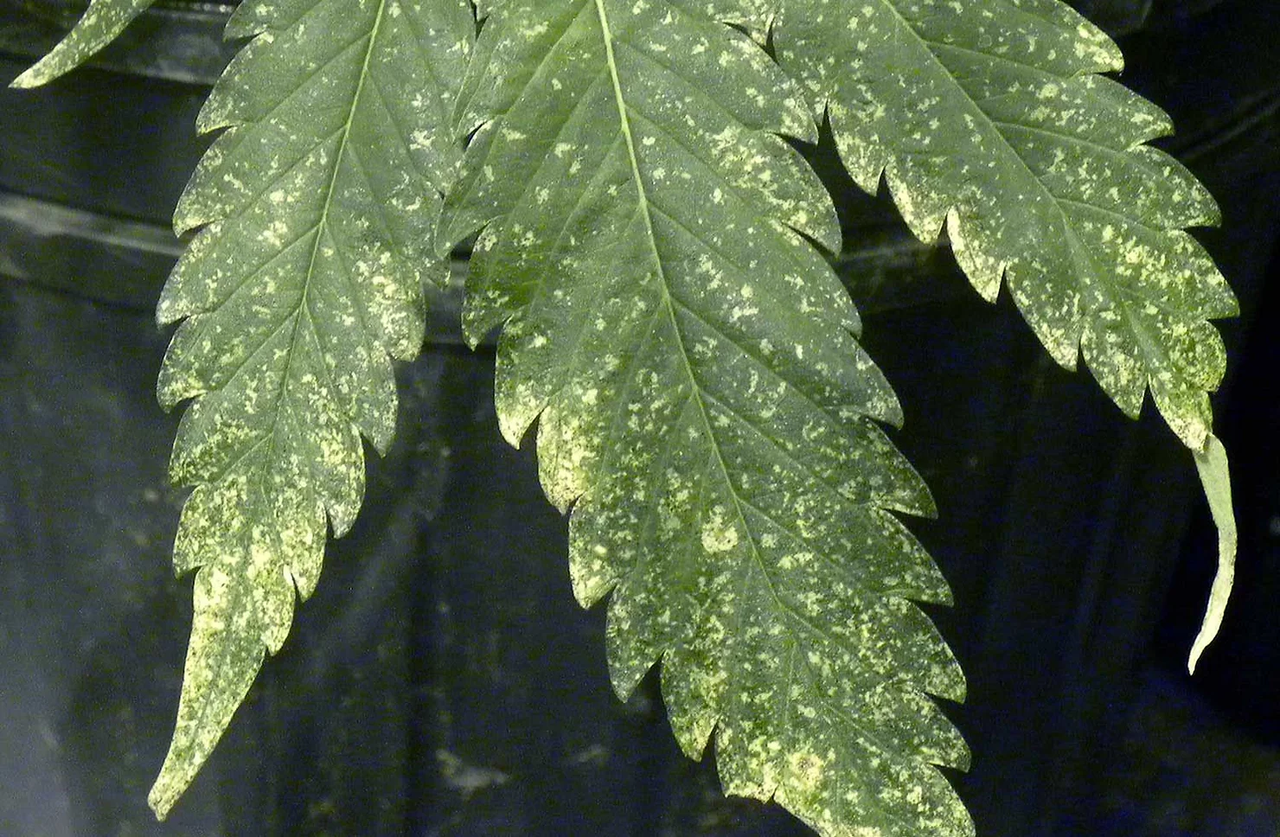
leaf spotting caused by thrips
Thrips are not very harmful to the cannabis plant, unless they are in large numbers. Thrips breed rapidly, so an infestation can happen very quickly. Once they reach a certain number, they will feed on, and suck so much sap from the plant that it will cause the leaves to wilt and droop. There will commonly be a lot of leaf spotting from where the thrips have fed. If you notice an abundance of these spots, you will need to take action!
How to Get Rid of Thrips
Luckily, thrips can be easily mitigated with the right process. This cannabis pest is easily washed away. The first step should be washing the plant off with plain water, using either a sprayer, or hose with some type of attachment. Once you have washed the plant off, and let it dry, it would be the prefect time to apply a spray.
Thrips also adapt quickly to chemicals, so you can use the same organic insecticides and processes that are used for spider mites!
4. Broad Mites

Broad mites are sometimes considered the most troublesome pests for cannabis growers. These minuscule creatures are nearly invisible to the naked eye, and even under high magnification, they can be challenging to spot!
Causes & Signs
You cannot see the bites marks left by broad mites either. The only way to really identify a broad mite issue is through the symptoms they cause in the plant after feeding. When broad mites feed on the plant, they don’t do so evenly. You'll notice areas that are heavily infested, and others that are not.
Broad mites have a very interesting feeding process. They will directly puncture individual plant cells and extract the cellular contents. During this process the broad mites will inject an enzyme into the plant tissue to aid in digestion and counteract the plant's natural response to the damage caused from the mites. This process results in direct damage and disrupts the structure and function of plant cells. Affected cells become engorged with fluids, leading to symptoms including:
- blistering;
- swelling;
- dropping of leaves;
- twisting or spiraling of new growth;
- necrotic tissue;
- and even changes in the way that light interacts with the leaf surface, giving it a shiny or glossy appearance.

blistering leaves and shiny appearance
If the plant contracts broad mites during the flowering stage, the buds are likely to become sick and die off. These symptoms can often be confused with or misdiagnosed as overwatering, heat or light stress, or other viral issues.
How to Get Rid of Broad Mites
Broad mites can be one the hardest cannabis pests to eliminate. They lay their eggs inside the plant tissue, making it nearly impossible to get rid of the larvae, which leads to rapid reproduction!
The best practice is to remove all infected areas of the plant, and quickly dispose of them in a sealed bag or container. Once the plant is free of symptomatic tissue, you will need to spray the plant with an oil-based product.

neem oil spray
Neem oil is a great option as it will halts mites feeding. However, be cautious not to overuse it, as it can clog the plant's pores and affect transpiration rate! It's best to continue treating the cannabis plant for the next 3-5 weeks. Yes, it might take up to 5 weeks! If not thoroughly addressed, mites can develop immunity to the products used and return even more resilient than before!
5. Aphids/Root Aphids

Aphids or root aphids will also reap havoc on your plants, and can ruin your weeks of hard work! Aphids live on leaves or stems, while root aphids inhabit the root zone! These bugs on weed plants will colonize and reproduce quickly, so it is crucial to frequently scout your grow area and closely check your plants! Aphids can appear in various colors, from green, yellow, orange, to black, and some even have a purple hue!
Causes & Signs
Root aphids can be very hard to detect, even when examining the root zone—they blend in very well! You may need to stare at the root zone for approximately a minute, looking for any movement or crawling on the roots.
Younger aphids don't have wings, but as they mature, they can grow wings and gain the ability to fly. Aphids feed on cannabis plant or root tissue. When feeding, they excrete a sugary liquid, which often attracts other pests and may carry diseases and viruses that can infect the plant.

cannabis plants affected by aphids
An aphid or root aphid infestation can cause:
- yellowing of plants;
- drooping leaves;
- a complete halt in root function;
- and even stalling the plant's growth altogether.
How to Get Rid of Aphids
Aphids thrive in all types of environmental conditions, so changing the temperature or humidity won't be much help in eradicating them. It's best to use a pesticide spray specifically designed for aphids on plant tissue.
If you are treating root aphids, you will need to do a medium drench, which involves thoroughly soaking and saturating the root zone with the said pesticide.
This should be done twice a week for two weeks, and the spray will need to be applied periodically for at least 2 weeks. This approach ensures that all the pests and larvae are eliminated!
Additionally, many growers prefer not to use pesticides and chemicals on their weed plants and opt for "predatory insects" that feed on the aphid infestation! This holistic approach can be an effective way to get rid of cannabis pests in the grow area!
6. Caterpillars

Caterpillars and other worm species are also very common when growing marijuana outdoors.
Causes & Signs
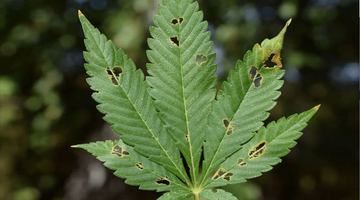
If your plants suffer from these pests, you may notice:
- missing pieces of leaves;
- holes in some leaves.
You may even catch one of these bugs munching away on your weed plant, which can be quite aggravating!
If you ever see large clumps of what appears to be dirt or soil on the plants foliage, this is not dirt, but caterpillars or worm feces. These are a clear indication these bugs have been feeding on your plants.
How to Get Rid of Caterpillars
While it can sometime be unavoidable when growing in an unconfined/outdoor area, there are steps you can take prevent and eliminate caterpillars or worms!
Start by applying a worm/caterpillar spray; this will deter the bugs on weed from feeding, and may drive the caterpillars away!
Additionally, consider adding a light screen around the plants. Often times moths and butterflies will land on the plant, and although they're beautiful to look at, they can lay eggs that will then hatch into caterpillars or worms!
Conclusion
Remember, when dealing with pests and bugs, your best line of defense is the frontline. Try to create regular IPM routines, and keep you grow area clean, and your plants healthy! These factors will greatly mitigate and reduce the chances of any type of pest infestation!
Get Weekly Expert Tips, and Grow Healthy Plants
Join our newsletter to get exclusive growing tips delivered directly to your inbox.

